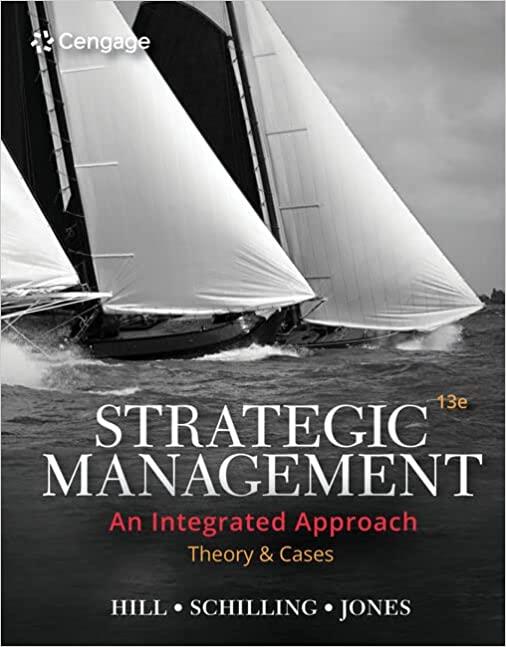The U.S. newspaper business is a declining industry. Newspaper circulation has been steadily falling since 1990, with
Question:
The U.S. newspaper business is a declining industry.
Newspaper circulation has been steadily falling since 1990, with the drop accelerating in recent years.
According to the Newspaper Association of America, in 1990, 62.3 million newspapers were sold every day. By 2018, this figure had dropped to 31 million.
The fall in advertising revenue has been even steeper, with revenues peaking in 2000 at $48.7 billion, and falling to under $17 billion in 2017. Reasons for the decline in circulation and advertising revenue are not hard to find; digitalization has disrupted the industry;
news consumption has moved to the Web, and advertising has followed suit. While newspaper advertising spiraled downwards, advertising revenues at companies like Google soared. The online classified advertising website Craigslist has been particularly damaging to newspapers. Advertisers can post ads on Craigslist for free (in most cases) that are easy to search and update in real time, unlike a newspaper. According to research by professors Robert Seamans and Feng Zhu, Craigslist alone was responsible for over $5 billion in lost revenues in the newspaper industry between 2000–2007.
The industry has responded in multiple ways, but implementing a response has proven to be anything but easy, as a change to one side of a newspaper’s business model requires changes to its other side. Newspapers traditionally relied so heavily on advertising that they subsidized the consumer news side. According to research by Professor Seamans and Zhu, without classified advertising revenue to subsidize subscriptions, many newspapers decided to increase their subscription prices by 5 to 10%. This led to falling numbers of subscribers. In addition, some newspapers have rapidly expanded web-based news properties at the risk of cannibalizing their offline print customers.
Nearly 80% of the largest newspapers in the United States (circulation higher than 50,000) have a paywall (i.e., a way of charging readers) for digital content. The New York Times, for example, has a range of subscription options that include everything from online only, to select days of print in addition to online, to print only. Many newspapers also increased the price of single copies, and this, combined with the digital paywall movement of charging for online content, appeared to stabilize circulation revenues and helped reduce the industry’s historic dependence on advertising revenues.
Against this background, one local newspaper company is swimming against the tide, and making money at it. Community Impact Newspaper produces 23 hyperlocal editions that are delivered free each month to more than 1.8 million homes in the Austin, Houston, and Dallas areas. The paper is the brainchild of John Garrett, who used to work as an advertising director for the Austin Business Journal.
In 2005, Garrett noticed that the large-circulation local newspapers in Texas did not cover news that was relevant to smaller neighborhoods—such as the construction of a local toll road, or the impact of a new corporate campus for Exxon Mobil. Nor could news about these projects be gleaned from the Web.
Yet Garrett believed that local residents were hungry for news about local projects and events that might impact them. So he launched the inaugural issue of his paper, Impact, in September 2005, financing it with $40,000 borrowed from low-interest credit cards.
Today, the paper has a staff of about 200. The newspaper emphasizes nonpartisan reporting. There is no investigative reporting, although Impact will run in-depth stories on controversial local issues, being careful not to take sides. “That would just lose us business,” says Garrett.
About half of each edition is devoted to local advertisements, and this is where Impact makes money. Advertisers are happy with the paper; while most newspapers have become increasingly focused on a national audience, Impact has retained a local focus that is very important for businesses that wish to advertise in their particular community. “We’ve tried everything, from Google Ads to Groupon, but this is the most effective,” says Richard Hunter, who spends a few hundred dollars each month to advertise his Houston restaurant, Catfish Station. Another advertiser, Rob Sides, who owns a toy store, Toy Time, places 80% of his advertising dollars with Impact’s local edition in order to reach 90,000 homes in the area.
An analysis by Forbes estimated that each 40-page issue of Impact brings in about $2.50 in ad revenue per printed copy. About 50 cents of that goes to mailing and distribution costs, 80 cents to payroll, and another 80 cents to printing and overhead, leaving roughly 40 cents per copy for Garrett and his wife, who own the entire company. If this analysis is right, Impact is making very good money for its owners in an industry where most players are struggling just to survive.
Questions
1. What advantages do traditional print newspapers have for entering the online news business?
What disadvantages do they have?
2. What do you think determines whether people will use print, online, or both sources for their news?
3. When a print newspaper initiates an online edition, what are the possible outcomes for its current display advertisers? Are they likely to prefer one channel over the other to reach their customers, or are they likely to select both?
If both, are they likely to expect a discount for a bundle of print and online advertising? How do these outcomes affect the newspaper’s bargaining power?
4. How do you think the cost structure of online advertising compares to the cost structure of print advertising?
5. Which print newspapers do you think will fare the best as online news continues to expand?
Why?
Step by Step Answer:

Strategic Management Theory And Cases An Integrated Approach
ISBN: 9780357033845
13th Edition
Authors: Charles W. L. Hill, Melissa A. Schilling, Gareth R. Jones





